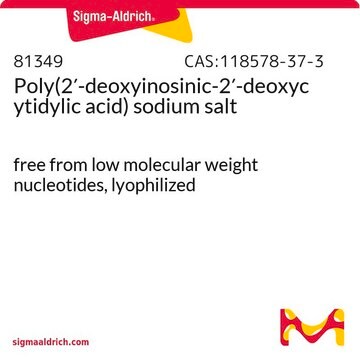추천 제품
설명
New formulation containing Terminal Transferase, recombinant.
Quality Level
제조업체/상표
Roche
환경친화적 대안 제품 특성
Designing Safer Chemicals
Learn more about the Principles of Green Chemistry.
sustainability
Greener Alternative Product
환경친화적 대안 카테고리
, Aligned
배송 상태
dry ice
저장 온도
−20°C (−15°C to −25°C)
일반 설명
DIG Gel Shift Kit employs recombinant terminal transferase and digoxigenin (DIG)-11- dideoxyuridine triphosphate (ddUTP) makes the labeling reaction very flexible. It can be used to label the 3′ ends of any oligonucleotide (whether it has a 5′- overhanging end, a 3′-overhanging end, or blunt ends). Both single- and double-stranded DNA can be labeled.
애플리케이션
특징 및 장점
- Convenient, since the technique does not require special equipment or technology.
- Reproducible, since DIG-labeled probes are stable indefinitely.
- Safe, because the assay is nonradioactive.
- Reliable, because the kit provides DIG-labeled control oligonucleotides to establish that the assay is working.
- Function-tested with the controls provided in the kit (See "Quality").
- Sensitive, since the kit can detect as little as 20fmol of the control oligonucleotide (after it is labeled according to the kit protocol).
포장
물리적 형태
제조 메모
Sample
Amount: 3.85pmol or 100ng
Type: Oligonucleotides with 5′-overhanging ends, 3′-overhanging ends, or blunt ends; single- or double-stranded DNA fragments (30 - 200bp)
Note: Ideally, fragments to be labeled should be between 30 and 100bp.
Time required
Oligonucleotide annealing and labeling: 10minutes
Formation of oligonucleotide-protein complexes: 25minutes
Electrophoresis: 1 hour to overnight, depending on electrophoresis system
Blotting: 1 - 2 hours
Immunological detection: 2hours
Exposure to X-ray film or imager: 15 - 40minutes
기타 정보
키트 구성품 전용
- Labeling Buffer 5x concentrated
- CoCl<SUB>2</SUB> Solution 25 mM
- DIG-ddUTP Solution, 1 mM Digoxigenin-11-ddUTP
- Recombinant Terminal Transferase 400 U/μl
- Binding Buffer 5x concentrated
- Control Oligonucletide ds 39mer, unlabeled 0.1 μg/μl, 3.85 pmol/μl
- DIG-labeled Control Oligonucleotide ds 39mer 0.4 ng/μl, 15.54 fmol/μl
- Control Factor Oct2A 25-75 ng/μl
- Poly [d(I-C)] 0.1 μg/μl
- Poly [d(A-T)] 0.1 μg/μl
- Poly L-lysine 0.1 μg/μl
- Loading Buffer without bromophenol blue
- Loading Buffer with bromophenol blue
- Anti-Digoxigenin-AP 750 U/ml
- CSPD 10 mg/ml
- Blocking Reagent
신호어
Danger
유해 및 위험 성명서
Hazard Classifications
Acute Tox. 4 Inhalation - Acute Tox. 4 Oral - Aquatic Chronic 2 - Carc. 1B Inhalation - Repr. 1B
Storage Class Code
6.1D - Non-combustible, acute toxic Cat.3 / toxic hazardous materials or hazardous materials causing chronic effects
WGK
WGK 3
Flash Point (°F)
Not applicable
Flash Point (°C)
Not applicable
이미 열람한 고객
문서
Digoxigenin (DIG) labeling methods and kits for DNA and RNA DIG probes, random primed DNA labeling, nick translation labeling, 5’ and 3’ oligonucleotide end-labeling.
프로토콜
The DIG Gel Shift Kit uses recombinant terminal transferase and digoxigenin (DIG)-11- dideoxyuridine triphosphate (ddUTP), which makes the labeling reaction flexible.
자사의 과학자팀은 생명 과학, 재료 과학, 화학 합성, 크로마토그래피, 분석 및 기타 많은 영역을 포함한 모든 과학 분야에 경험이 있습니다..
고객지원팀으로 연락바랍니다.


![Poly[d(I-C)] lyophilized, pkg of 10 U (10108812001 [A<sub>260</sub> units]), pkg of 50 U (11219847001 [A<sub>260</sub> units])](/deepweb/assets/sigmaaldrich/product/images/352/091/ef743cea-ccd8-44f1-8f3b-dec5a1e4f5d1/640/ef743cea-ccd8-44f1-8f3b-dec5a1e4f5d1.jpg)







